Simplified security and networking
Overview
Teaching: 15 min
Exercises: 0 minQuestions
Let’s have a look at security and networking
Objectives
Understand that security groups can be created to expose services
Understand that limiting access improves security
During the training with instructor
During the training with instructor, the security groups will be pre-populated and all these steps are purely informative.
What are security groups?
Security groups are the tool you use protect access to your virtual machine. Remember that to access your cloud instance you will use SSH (Secure-Shell).
SSH is a password encrypted network protocol which allows you to login to your instance securely.
The password is a Key Pair (the private key is located on your local terminal and public key located on your instance) SSH connects over port 22, so your Security Groups must allow for at least these connections.
The “port” mentioned here is a number used by the system to define a network communication protocol. HTTP, which you may be familiar with, is port 80.
Less is better
Each port you open on a VM a potential vulnerability, so we strongly recommend you limit open ports to those strictly necessary for your work,.
How do you make new groups/rules?
To make a security group, you will go to the Network / Security Groups section and hit “Create Security Group”;
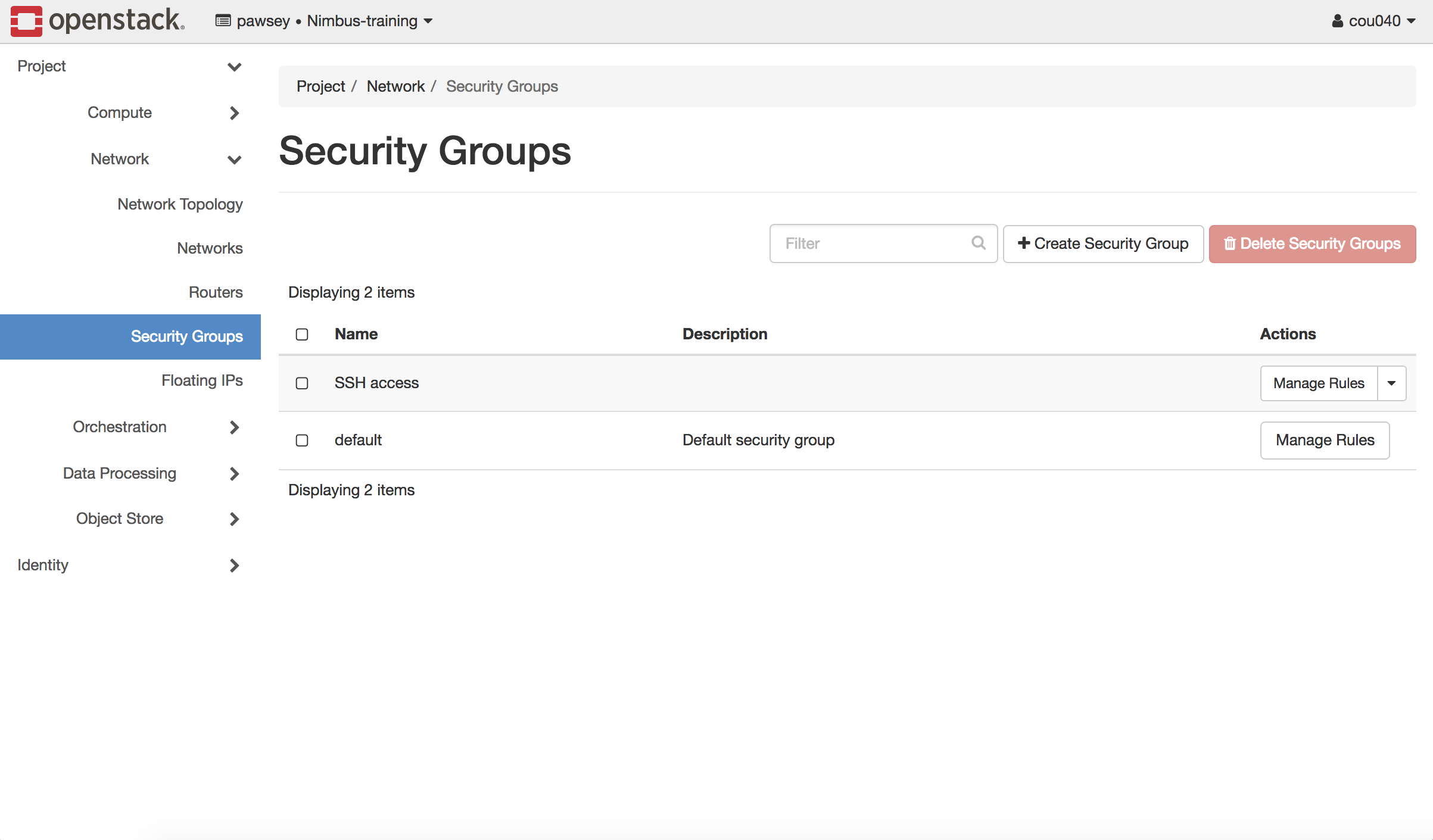
First you give your group a name:
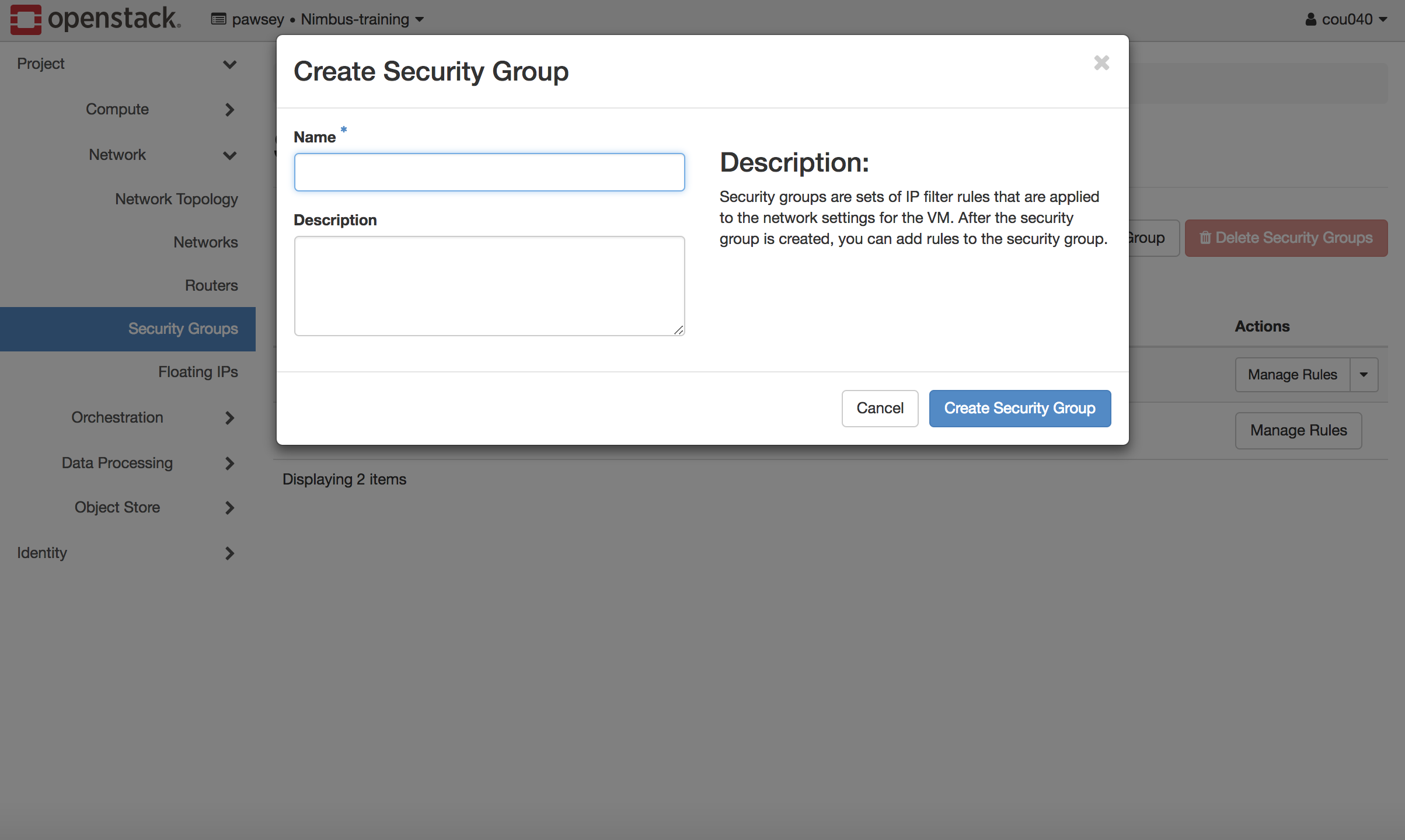
Then you can go back to the security group management pane and click “Manage Rules”. Here we can add rules. “Ingress” means things can come in to your VM, and “Egress” means things that can go out from your VM.
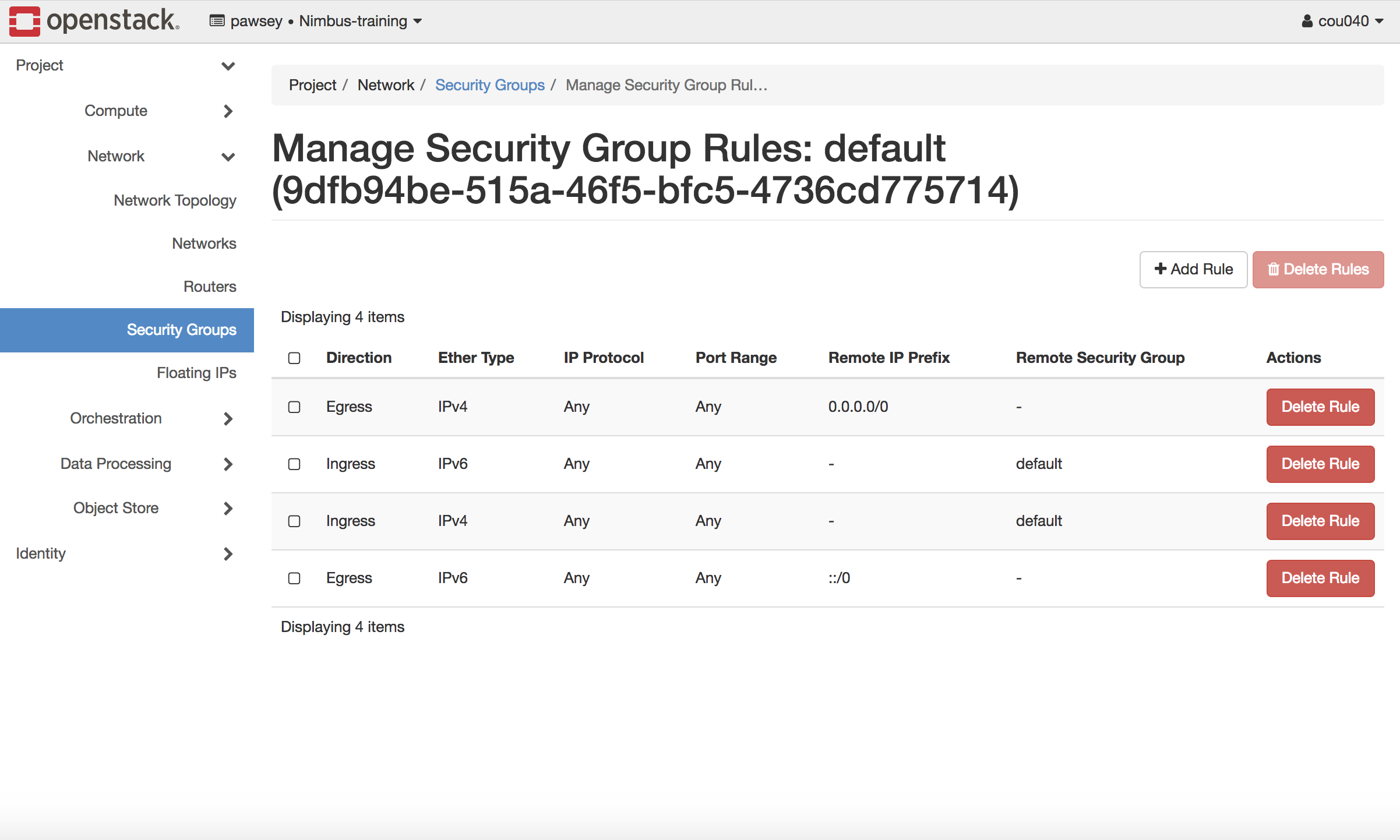
You can create a custom rule:
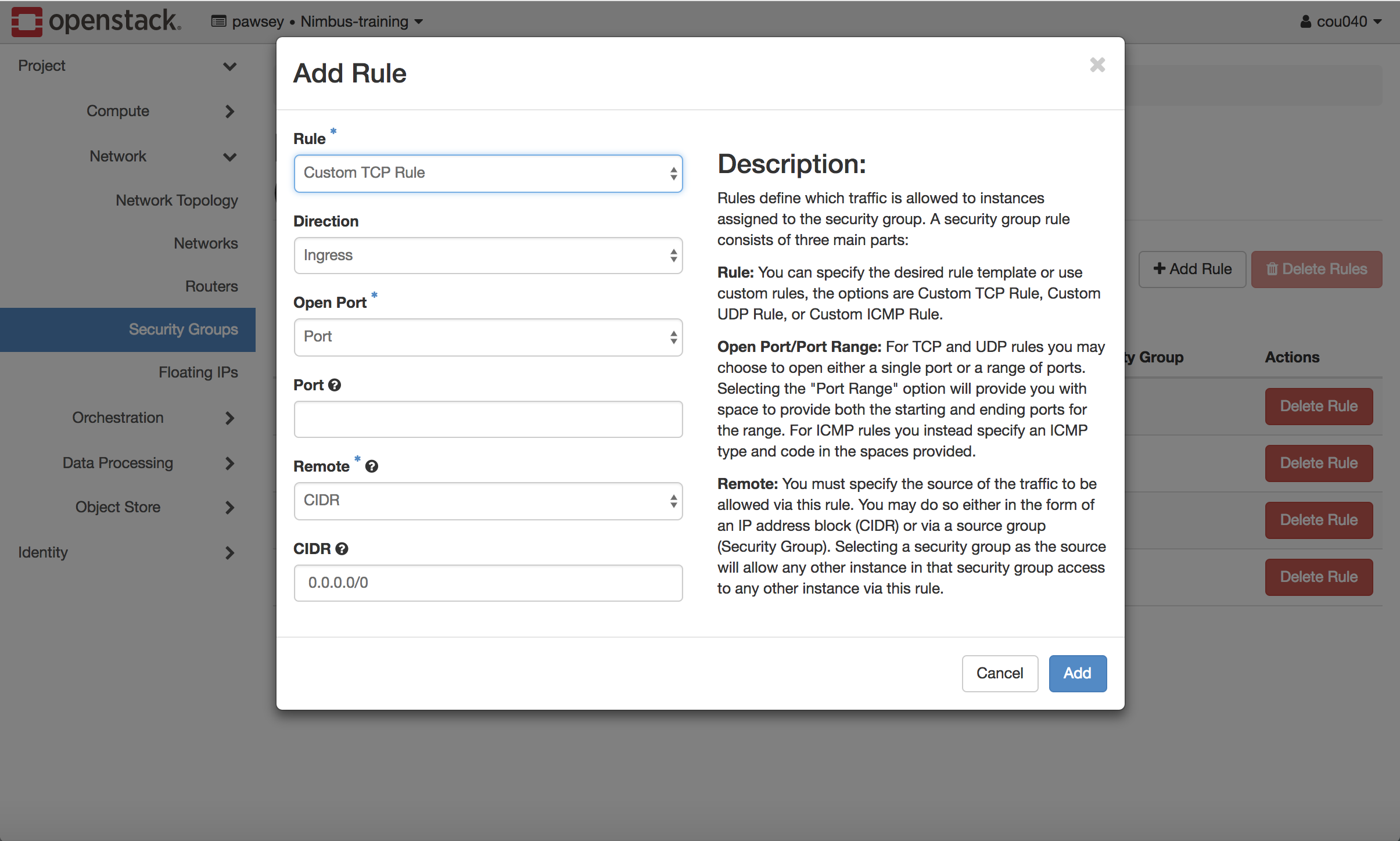
Or you can select a rule from the predefined list
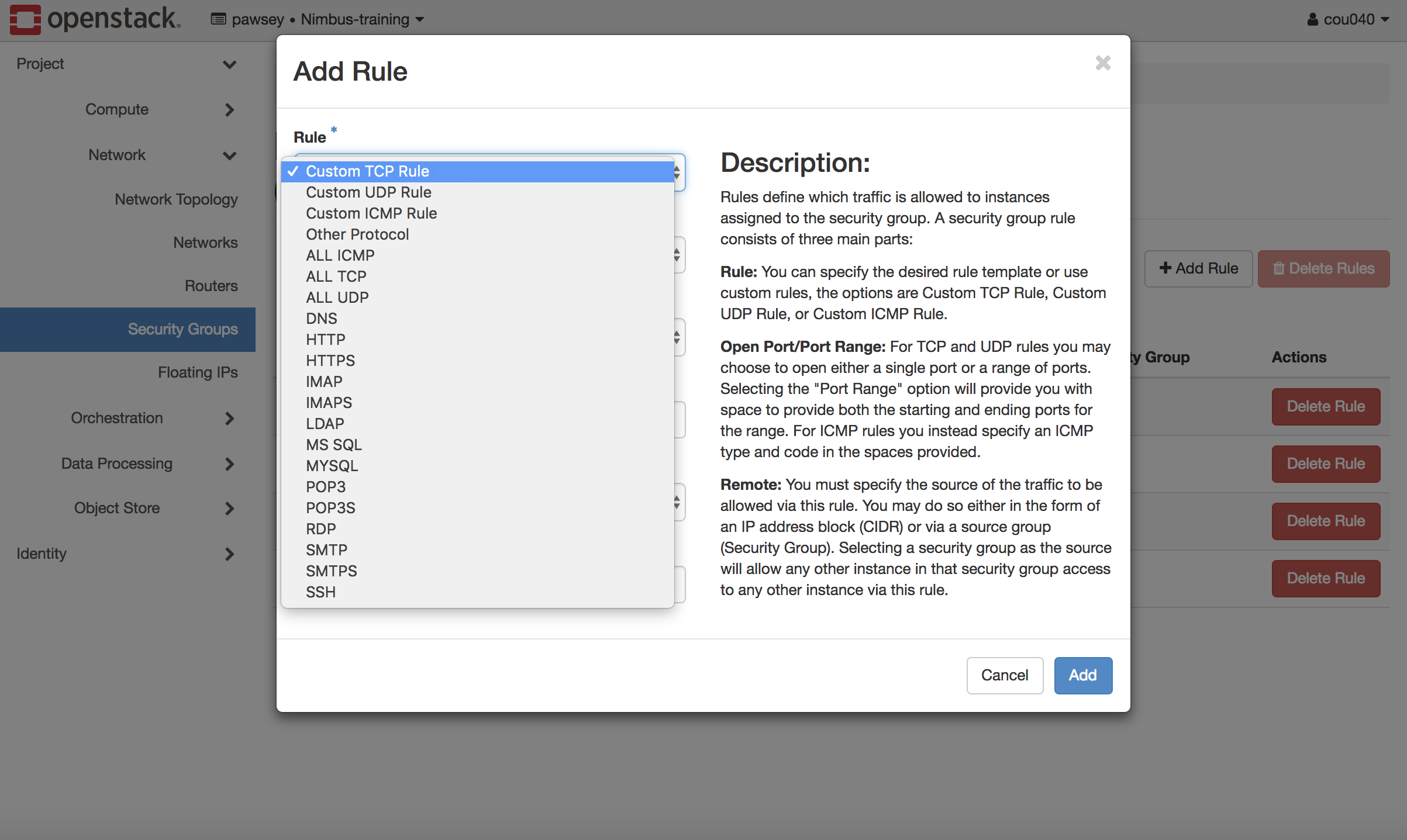
Key Points
Security groups and networks can be modified to meet specific needs